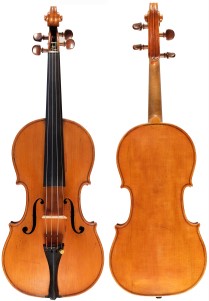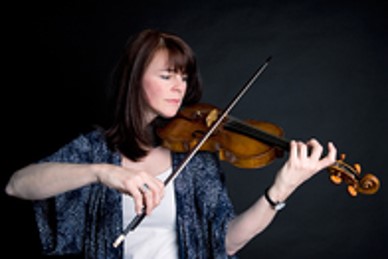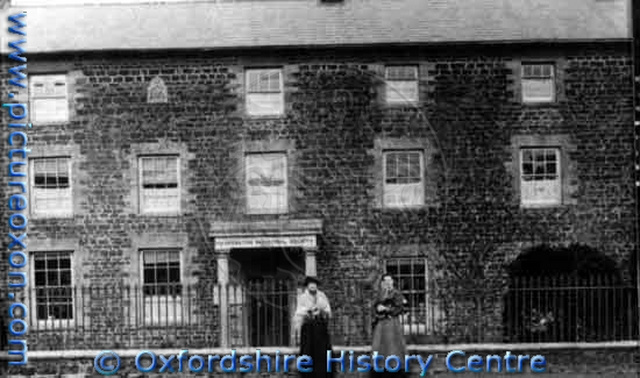The Adderbury violin-maker, Charles Harris (1791-1851), came to Adderbury after serving his apprenticeship, established his family here and carried on his trade in the village for a decade or so in the 1820s. He is interesting to us principally because of the enduring quality of the musical instruments, violins and cellos chiefly, he made while he was here – and because of the unfortunate set of events that turned his life upside down once he had left the village.
Charles Harris was born (some say in Northampton) in 1791. His father, Charles Harris senior, had married Marian Drew at Somerton in 1787, the first of a lattice of connections with this part of the world. Charles Harris junior did his apprenticeship with his father at the latter’s workshop in Cannon Street Road, Ratcliffe Highway, London. By the time he was in his early twenties he was ready to strike out on his own. He married his wife, Elizabeth, probably in 1815, and set up his business initially in Woodstock, where his first child was christened in 1816. After three years or so in Woodstock and another two children he moved to Adderbury in about 1819.
And in Adderbury he stayed for nearly ten years. Village tradition has him setting up his workshop next to “The Bell”. The first Adderbury records we have for Charles and his wife Elizabeth are for the baptism of their fourth child, Sarah, in July 1820. There is also a Harris violin dated “Adderbury 1820” illustrated in Adderbury: A Thousand Years of History. Sarah was followed by Charles, Marian, Elizabeth, and Ruth, all before 1827. Two further children were born after Harris had left Adderbury, bringing the total to ten, four boys and six girls. Later accounts of the family suggest that seven survived to adulthood.
But do we have any independent judgements on the quality of the instruments that Adderbury Charles produced? Well, a contemporary, George Herbert, a Banbury shoemaker born in 1814, recalls in his memoirs that when he was a boy he always wanted a violin. He saved up all his pocket money and bought one, describing it as a “fairly good one (it was one of Harris’ make that used to live in Adderbury)”. More important, perhaps, is the view of Henry Lockey Hill, one of the best makers of the turn of the century who left a very distinguished legacy of fine violins, violas and cellos. According to him, Charles Harris was “a good workman, who made some sound instruments, which have an agreeable quality of tone and a fair amount of power.” This admiration has continued to the present day, with one current handbook of antique violins saying that : “His work is very precise and recalls that of contemporary London makers …, with golden amber coloured varnish and a generally Stradivarian or Amatisé model. Cellos are particularly admired.”

One of the best known professional violinists in this country, Lucy Russell, leader of the Fitzwilliam Quartet since 1995 and Professor of Baroque Violin at the Royal College of Music, plays regularly on an instrument produced by Charles Harris of Adderbury. This is what she has to say about the character of the instrument she knows so well:
“My Charles Harris violin has often received compliments for sounding like a fine Italian instrument. The sound is both warm and direct and the g string has a depth and darkness which I particularly relish. It has always been easy to play – its ‘temperament’ is even (which is much appreciated when having to perform in adverse circumstances, i.e. too cold, too hot, too humid). Only very occasionally does it ‘sulk’. As someone who also plays a Gagliano, I can say that my Harris can communicate and move a listener just as well (and at a fraction of the price.)” (Personal communication)

Having now given Charles Harris due credit for his high standrads of craftsmanship, there are two things about him that we must recognise about him, even from his Adderbury days, and which may help to explain his subsequent career. First, it is possible that, despite his expertise, Charles Harris suffered from an inferiority complex. Because the same authorities that typically praise him, even more typically praise his father much more highly. One handbook says that our Charles Harris exhibits “fairly good workmanship but separated in neatness from that of the father by a considerable gap.” We can only guess what effect this sort of judgement had on Harris’s self-confidence.
The other thing we can’t help noticing, when we compare Charles Harris with his contemporaries, is that Harris never shows much in the way of business acumen. This was far from true of his contemporaries. For example, the man who was a fellow apprentice, Samuel Gilkes, was credited with understanding and catering for an emerging market of well-off middle-class citizens who wanted fine instruments for themselves and particularly for their daughters. And Harris’s own apprentice, William Ebsworth Hill, part of the longest-running and most respected of English violin-making dynasties, became in time one of the world’s leading authorities, supervising one of the greatest workshops in Europe. All these successful people continued to use Charles Harris to produce and repair instruments, but Charles Harris must have been keenly aware of the differences, and must have felt his relative poverty and insignificance as irksome. It is recorded, by the way, that poverty was one of the things that he shared with his father.
In the late 1820s Harris’s personal circumstances changed radically, in a way which was to lead him to leave Adderbury. In 1829 Charles Harris learned that he had inherited a part of the Lordship of the Manor of the neighbouring Oxfordshire village of Steeple Aston. This had come about because his mother was a relative of an Aynho surgeon and apothecary, John Webster, whose proudest possession was the Steeple Aston Lordship of the Manor. He determined that this Lordship should go to his closest male relative, who turned out to be Charles Harris due to his marriage to Elizabeth. When John Webster died in 1829, the title with land and buildings reckoned to be worth £200 a year came to Charles. Suddenly the craftsman, not yet thirty, hitherto uncertain of his standing in the world, could call himself a gentleman and could make proper provision for his growing family. So, sometime between the baptism of Ruth in August 1827 and the baptism of Jacob in March 1830, the Harrises moved to Steeple Aston, living at first in the Webster farmhouse there.
The first thing that happened is that, once in Steeple Aston, Harris began to give himself airs – we know this to be true because the first historians of Steeple Aston were eye-witnesses of the story: they report that the villagers began to call him “Lord Harris” behind his back. The second thing that happened was that, maybe quite reasonably from his point of view, Harris decided that he needed a new house, a new manor house indeed, both to house his large family (which was swelled about this time by his newly widowed mother), and to reflect his new position in society.
He began construction of his new manor house in 1831. The building has been many things subsequently – a baker’s, a public house, a private house – but is not huge or overly grand.

Nonetheless, the project was enough to ruin him, in a story worthy of one of Charles Dickens’ tales of lawyers, debts, prison and so on. The problem was, that Harris had not understood that his inheritance was only worth the £200 that people had talked about if you farmed the land – and Harris was no farmer. So, to build his house he began to borrow and to mortgage whatever small properties belonging to his estate that he could; and, as the costs of the building accrued and the first loans began to fall due, he borrowed some more. He couldn’t mortgage the estate itself because John Webster had so expressed his will that it was to continue in perpetuity from eldest son to eldest son – in other words, in that expression we again hear so often in 19th century novels, it was entailed.
However, someone did suggest a solution even to this, and that someone was Charles Cottrell Dormer of Rousham and his lawyer. Cottrell Dormer had been increasing his land holdings and influence in the neighbourhood for some time, and what he suggested was really Dickensian: they should together apply to the House of Lords to break the entail on a legal technicality. This is how farmer and land agent, Harris’s contemporary and early historian of Steeple Aston, William Wing, described what happened next:
“In the first year of the reign of Her present Majesty, namely on the twelfth of July, 1837, a private Act of Parliament … received the Royal Assent. This unique statute recites that John Marten Watson, who died in 1828 … directed by his will that neither his manorial privileges nor his estate should be alienated by Charles Harris, his devisee, but should continue from right heir to right heir of his family for ever: but that as the intrinsic value of the estate had been valued at £4,335, and Mr. Cottrell Dormer was willing to purchase it at the larger sum of £5,800, in order to make his property more compact, Watson’s will might be deviated from and the privileges and property alienated by Watson’s devisee, upon the condition of his purchasing other land elsewhere at the lesser sum, and retaining the difference, upon the astonishing figment that the next heir was entitled to the intrinsic value and no more. This private Act was carried out, but the attendant expenses and difficulties were so great that instead of benefiting it ruined the person whom Watson intended to do good to.”
So Charles Harris had his Act of Parliament, but he still had the loans and mortgages to settle. He tried various things, including building workers’ cottages for rent in an area called Harrisville as well as, according to his obituary years later in the Banbury Guardian, regularly visiting the gambling dens of Oxford! In any event, less than two years later in 1843, pursued for the repayment of his mortgage, Harris applied to the Court for Relief of Insolvent Debtors. Eventually, Harris’s mansion was sold to a new owner, George Robert Stratton, a currier (leather-finisher) from Bicester.
In telling the Steeple Aston side of the Charles Harris story I’ve been very reliant on the work of local historian, Geoffrey Lane, in his Cake & Cock Horse article on “The fiddle-making Squire of Steeple Aston”; and I’m simply going to quote Geoffrey Lane’s words to round the story off:
“Charles Harris himself lived on until July 1851, when he died at the Oxford Infirmary. His body was brought back to Steeple Aston for burial on 7 July, although no headstone marks his grave. Little is known of his final years, which cannot have brought him much joy. Despite describing himself variously as a farmer and a gentleman, he had never completely abandoned violin-making, as the inscriptions on some of his later instruments show, although relatively few from this period have surfaced in recent years. His move to Broad Street, Oxford, in 1840, and his description of himself then as a musical instrument maker, may have marked an attempt to return to what he did best, following his failure as a farmer. He evidently encouraged his second son, Richard, to take up the craft. The 1851 census shows Richard — described as a musical instrument maker — sharing a cottage on South Side with his sister Elizabeth, the only Harris children still in the village. Richard later moved to “Old Tom’s” in Northside where he continued making violins, married his landlady Martha Spittle, and ended up as a corn and hay merchant. The shop built by Wall and Louch on the corner of Paines Hill eventually became “Harris Stores” in the hands of Richard’s son, John Watson Harris.”
Phil Mansell
April 2020
